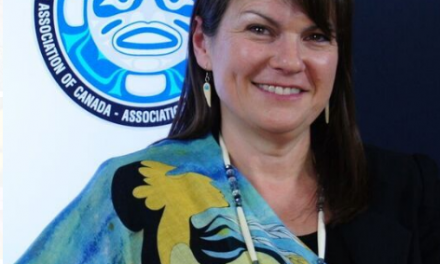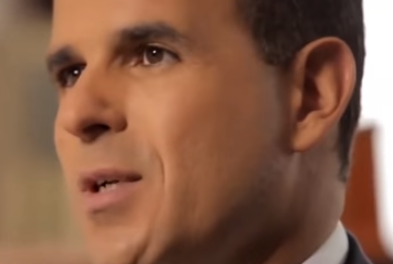Treat a man as he is and he will remain as he is. Treat a man as he has the potential to become and you make him better than he is.– Goethe
If we are taught effective habits but are then placed into a defective habitat (culture), one that is unfriendly, unsafe, or where we do not feel valued, we cannot be expected to fully develop our newly learned habits, or improve. It is like taking a world class seed, planting it in toxic soil, and expecting it to blossom to its full potential. It will not happen. In contrast, miracles can happen when people are placed in a highly effective habitat – we perform at higher levels.
So there exists a reciprocal relationship between habits and habitats. Positive habits produce better habitats, and positive habitats produce better habits. The question therefore is: how does an organization best go about creating a positive habitat, or culture?
In many organizations, and in most schools, they take a reactive approach to improving their culture. They simply let it evolve or leap from crisis to crisis. When a problem like bullying arises, they put out the fire (at least temporarily), hope it will never happen again and then react to the next crisis.
What kind of culture do you observe at school, home, work?
Habit |
Highly Ineffective Culture |
Highly Effective Culture |
1. |
Be Reactive. People make excuses, blame failures on others, rules, and/or policies, are moody, and focus outside their sphere of influence. They wait to be told what to do. |
Be Proactive. People exert initiative, accept responsibility for actions, control their emotions, and focus on things they can influence. They make things happen. |
2 |
Have No End in Mind. People lack vision and purpose. There are no common goals. Plans are constantly changing. |
Begin With the End in Mind. People are in the pursuit of meaningful purposes, with clear goals and strategies. They have clear personal goals. |
3 |
Respond to Every Urgency. People are constantly responding to crisis. They have no time for planning or developing people. They lack discipline. |
Put First Things First. People are focused on important priorities. They say no to frivolous requests. They make time for planning, preparation, and prevention. |
4 |
Think Win-Lose. People go for win-lose or lose-lose. Trust is low. People battle over resources and do not share best practices due to worries that others might get ahead of them or be viewed as better. |
Think Win-Win. People think win-win, are trustworthy. They balance courage with consideration, and look for ways to benefit the whole. Collaboration and sharing best practices is encouraged. |
5. |
Seek to be Understood. People neither listen to others nor feel understood. They ignore others’ feelings, and fear sharing their own feelings and opinions. |
Seek First to Understand. People diagnose before they prescribe solutions. They are empathic, nonjudgmental, and feel free to express opinions freely. |
6 |
Work in Isolation. People work by themselves or in cliques. They think their ideas are always best. They avoid people who think differently from them |
Synergize. People seek out others’ ideas and value diversity. They are humble. There is high teamwork and creativity. People feel free to think outside the box. |
7 |
Stay Dull and Stagnant. People’s skills are outdated. They live unbalanced lives, neglect relationships, and often don’t even know each other. They lack meaning. |
Sharpen the Saw. People strive for continuous improvement. They are up-to-date, energetic, and enjoy a family feeling. They keep their spirits high. |
It must be said that there are many schools where leadership is markedly absent on a daily basis. Many educators are so overburdened by management tasks that they find no time to even think about leadership. Many have never been afforded leadership training. They were great teachers so everyone assumed they automatically make great school administrators. And when they do get summoned to attend leadership training they discover that in reality it is nothing more than management training: hiring policies, new laws, upcoming curriculums, and so forth. All this happens despite everyone knowing that sitting behind a desk or standing in front a classroom no more makes a person a great leader than sitting behind a certain classroom desk make a child a great student.
As a result, many schools have developed strong management cultures. They emphasize efficiency, managing budgets, conducting assessments, filling out paperwork, attending meetings, sifting data, and so forth. Likewise, many classrooms have strong management cultures. They are focused on maintaining control, meeting standards, finishing before bells, collecting homework, tracking attendance, and identifying high and low achievers. Again, all that management is necessary and important, but what about leadership?
“Leadership is communicating to people their worth and potential so clearly that they areinspired to see it in themselves” – Dr. Stephen R. Covey
The same lack of leadership resides in corporate and government sectors. It is also true of many homes where parents are trapped in management paradigms, thinking only of control and rules, with little thought of setting direction, finding purpose, building a family feeling, or being role models. Leadership is also lacking in many individual lives. People are so busy managing schedules, checking off tasks, and putting their noses to the grindstone that they seldom pause to clarify their values or spend time building their most meaningful relationships.
All schools, every culture, deserve proactive attention and needs to be consistently nurtured. When left to chance, any culture can become management heavy, leadership light, and grow stifled overnight. We must not leave our future to chance.
Taking intentional steps to create a leadership culture in our schools, homes, communities and organizations brings direct positive effects. We become more engaged and involvement increases. Our desire to participate and be diligent increases. We all feel safe physically and emotionally. Trust goes up. These are just some of the impacts that can come from proactively working on the culture –it’s a wonderful place to be!
For more information on FranklinCovey and the content from The Leader In Mebook shared within this article please visit http://franklincovey.com/ and http://www.theleaderinme.org/
Note: Lana Binning has worked with a multitude of small and large organization throughout her 25 years operating her Aboriginal creative design and communication company, and over the past five years with Franklin Covey helping Indigenous communities to develop train and engage their leaders and teams.





